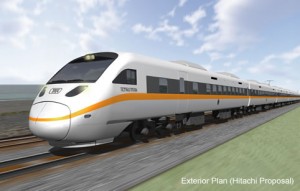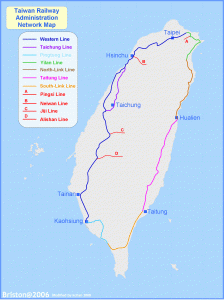
Introduction
In accordance with the sustainable energy policy and energy efficiency program, Chinese Taipei is committed to achieving CO2 emissions of 2005 levels by 2020 and 2000 levels by 2025. In order to promote carbon reduction in the transportation sector, the Ministry of Transportation and Communications developed the “Green Transportation Development Policy” and tasked relevant authorities to implement the plans accordingly. For example, the Taiwan Railways Administration (TRA) is focusing on two points:
(1) To increase transport volumes by attracting more commuters and
(2) Increase energy efficiency by modifying current railway facilities and applying energy-saving systems into new construction projects.
Promoting the Usage of Mass Transportation System

In support of government efforts to promote public transit use and upgrade existing railway systems, the TRA has conducted the “TRA Rapid Transit Systematization in Metropolitan Area Project” and “TRA Overall Vehicle Replacement and Procurement Project” for several years.
The goals of implementing these two schemes include (1) minimizing travel time, (2) simplifying carriage type, (3) enhancing transfer convenience, (4) reducing operating costs, and (5) further slash CO2 emissions. From 2001-2017, 32 transit stations have or will be built in suitable urban areas to support the Western Line. Additionally, a total of 184 Tilting Electrical Multiple Unit (TEMU) cars and 428 commuter EMU cars have been introduced into the system since 2001; this import will continue until 2014. The hope is that all these measures will increase ridership and reduce CO2 emissions in accordance with not only government efforts, but the global trend to abate greenhouse gas emissions.
Increasing Energy Efficiency Level

Newly-built transit stations constructed in compliance with diamond-level green building standards are highly promoted. Each mconstruction project is intended to be planned in accordance with multifunction, carbon reduction, energy efficiency, interior environment improvement, water resources, waste and garbage improvement, cultural creativity, localization, and convenience. A total of 15 stations are currently granted as the green building stations, of which the Hukou station is graded as diamond level, Chupei station is graded as golden level, the Chaozhou station, the Shalun station, the Chang Jung Christian University station and the Da-Lin station are graded as bronze level, and the rest falls within the standard level. In addition to building green stations, we are sure that after the electrification system is well installed for the East Line, all diesel cars will be replaced with electric push-pull cars, thereby not only increasing the speed but also helping to reduce the amount of CO2 emission.